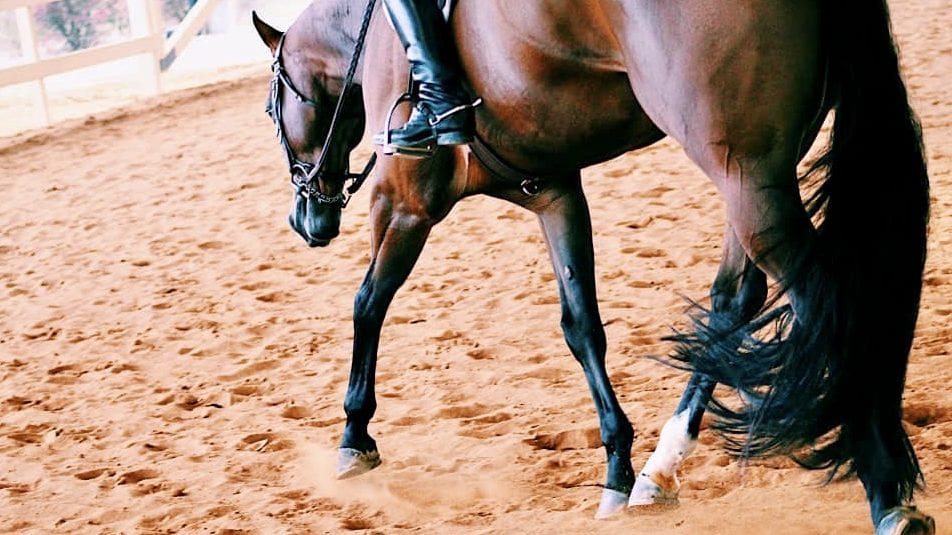You’ve been searching for your new show partner, and you found just the horse to fit the bill. You are a natural fit, the horse is in your budget, and your trainer thinks this one will help you accomplish your goals. There is just one thing looming…this horse requires “maintenance.”
While this may put a pit in some horse buyer’s stomachs, purchasing a horse that requires some maintenance doesn’t have to feel like an overwhelming or negative experience. Many times, with the right education and plan in place, these horses can continue to show at the highest levels for many years.
We spoke to several trainers and they shared their perspective and thoughts on buying a horse with a maintenance issue.
Compromise may be necessary
“Buying a horse with maintenance issues may not be the ideal situation, but sometimes unavoidable for several reasons. Maybe you found the perfect horse that you cannot live without,” Leah Bryner of Rebecca Trego Show Horses told us. “Or perhaps, you are looking for a more experienced show partner and know you are willing to keep up their maintenance to own the right horse and for the right price,” she also shared.
Leah stressed that all horses would need some routine veterinarian care and that, “these things are beneficial to most horses.” Certain medications can also assist in extending the longevity of use for a horse with maintenance requirements. Leah agreed, “Depending on what you are willing to put in, these can help to keep our middle-aged to senior horses comfortable for years longer than they would be without.”
Keep an open mind
“We have to be open-minded to horses with issues, said Kristin Layher of Kristin Layher Show Horses. “All horses come with some baggage. If you have a good team of veterinarians to walk you through how to maintain issues, 90% of the time you’ll be fine.”
Casi Vician of IV Show Horses agreed. “If you are paying a vet $1,500 to radiograph a horse, it is not if they find something, it is what they will find,” she told us. “No horse is without a blemish on the inside. One has to consider if what is found on radiographs can be maintained and is appropriate for the job you are going to be asking the horse to perform. If the vet doing the exam and your vet concur that the horse can perform the job, but has some maintenance issues, and you really love the horse on all other accounts, follow your vet’s advice on maintenance and go ahead with the purchase.”
Communication and education are key
Michael Hunsinger from Hunsinger Horse Training told us how important communication is in a situation like this. He said, “When buying a horse with maintenance issues, communication between the buyer and seller is the most important thing. I like to know how the previous owner managed up-keep. That way we can keep things consistent with our maintenance. Show horses are just like professional athletes and should be treated with the same care and respect. For all our show horses, even those without maintenance issues, we keep in close communication with our veterinarians and farrier to ensure the longevity of each.”
Kristin also encouraged us to not shy away from a good horse that may have a few lumps and bumps. “So many people are scared of maintenance issues, and most of it comes down to education. Talk to your veterinarian and your horse trainer and educate yourself on how much it takes to keep these horses sound,” she told us. Casi echoed this as well, “Don’t be afraid to purchase a horse with maintenance issues, just educate yourself on how to maintain issues and stick to the plan. Keep in mind that this may also allow you some leverage in bargaining on price at the time of pre-purchase.”
Utilize your team
Each trainer we spoke with reiterated the importance of working with your veterinarian, farrier, and nutritionist to put together a plan for caring for a horse with maintenance issues. Kristin said, “I think vet work and maintenance is a huge part of the puzzle to our show horses; after all they are athletes. Most people don’t put themselves through the paces a star athlete would, so there’s just a barrier of understanding how much we ask out of these horses.”
Casi also stressed the importance of listening to the professionals and shared this thought, “Avoid polling your friends on social media or taking advice from your friends. What may or may not have worked for them may not be appropriate for you. They are not professionals.”
With these tips in mind, purchasing a horse with maintenance issues doesn’t have to be daunting or scary. Keeping an open mind, talking with the professional team around you and educating yourself on the needs of your horse can lead to a long, successful and comfortable partnership for you both.
Julie Hoefling was born and raised in Akron, Michigan but now resides in Cave Creek, Arizona with her husband, Jerry. She works at Central Garden & Pet (Equine Division – Farnam) as a Brand Manager over grooming, wound and leather care. Julie shows her horse, Movin The Chains, in the western all-around events under the guidance of Ryan and Andrea Kail.









